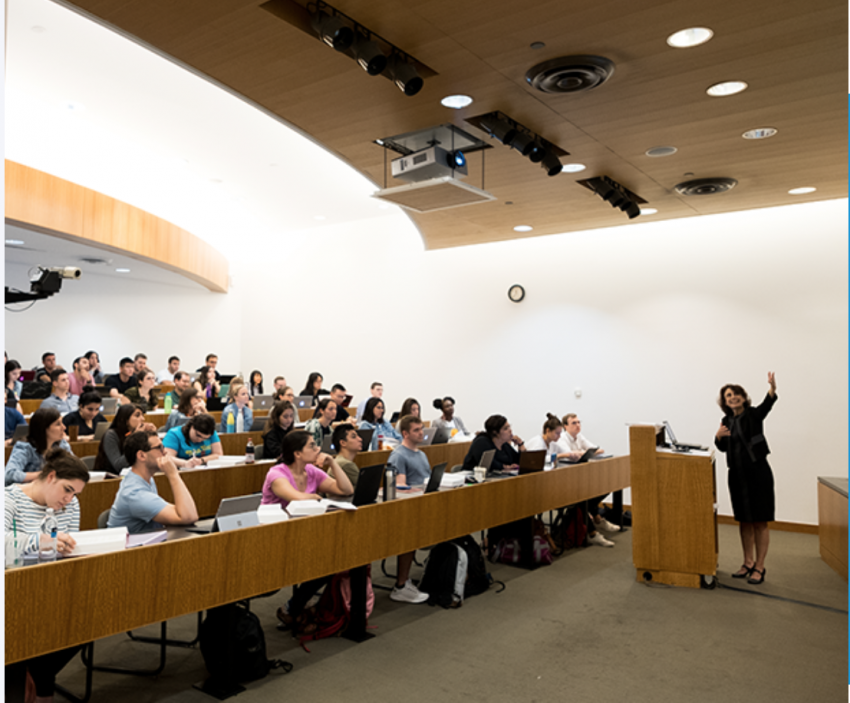
The Cardozo Law Institute in Holocaust and Human Rights (CLIHHR) launched Confronting Structural Violence: Law Teaching Guides today to provide a set of open-access teaching resources for professors.
Law faculty can download and immediately use any of the 10 open-access Law Teaching Guides, which are grounded in cases many professors already teach and cover topics that are currently making headlines. The Law Teaching Guides, which cover constitutional law, international law, criminal law, corporations, and IP, are flexible resource professors can easily adapt for introductory survey courses or upper-level seminars.
The project is being led by Professor Jocelyn Getgen Kestenbaum, director of the Benjamin B. Ferencz Human Rights and Atrocity Prevention Clinic at Cardozo, as well as director of the Cardozo Law Institute in Holocaust and Human Rights. She has conducted research in countries throughout Latin America, Africa and Asia, and has written award-winning articles examining the reproductive health and human rights violations of Nicaragua's complete abortion ban as well as Peru’s enforced sterilization programs during the internal armed conflict.
“Building on the shoulders of critical legal studies and third world approaches to international law, professors in the legal academy are recognizing gaps in U.S. legal curriculum that legal education must address,” said Jocelyn Getgen Kestenbaum.
“One major gap is to discuss and confront the law’s—and lawyer’s—role in perpetuating structural discrimination and violence against identity groups in the U.S. We decided to create open-access guides that are easy to use and adapt across disciplines to aid law professors across the country as they help students grapple with these big issues. I’m excited to share what we’ve created, and I hope professors find them useful.”
Q&A with Law Teaching Guides Director Jocelyn Getgen Kestenbaum
Q: How did the idea for this project come about?
A: As director of CLIHHR and the Benjamin B. Ferencz Human Rights and Atrocity Prevention Clinic, I focus on human rights law scholarship, training, and advocacy on addressing the root causes of identity-based discrimination, polarization, and violence. The United States has never been immune to atrocity crimes; indeed, the nation was founded on policies of genocide and slavery. Lawyers, for instance, passed and upheld laws that enforced the legality of slavery; enabled the forced relocation of Native Americans; administered the internment of Japanese Americans; justified torture (through “enhanced interrogation” techniques); and separated refugee children from their parents at the U.S. border.
Today, the U.S. legal system continues to perpetuate settler-colonialism, an inherently violent system that privileges some and oppresses others. Recent global trends toward nationalism and authoritarianism, coupled with recent global pandemic crises, underscore the structural inequalities, economic instability, and social fragmentation along identity lines in the U.S. that atrocity prevention scholars and practitioners identify as risks for future identity-based violence.
Q: How and why did you select the topics covered in these first 10 Guides?
A: Two main factors drove the selection process. First, I chose topics—such as immigration, voting rights, and religious liberty—that are currently making national headlines and that lend themselves well to a discussion of structural violence through the law, from U.S. conflict history to the present. Second, I chose topics in courses that many, if not all, law students take, either because these courses are part of the first-year curriculum or because they are popular or considered part of the core upper-level curriculum. There are many additional topics to address in future guides.
Q: What is the most exciting aspect of the Guides?
A: Students are demanding course material that confronts issues of structural and identity-based discrimination. Many professors want to meet these demands but lack concrete tools to innovate their classroom discussions. These guides begin to meet those demands and fill those gaps with a positive preventive message toward recognizing and responding to structural violence through law.
Q: How might the Guides be used to help law students understand what’s happening in the headlines today?
A: The guides add the most recent case law—such as the travel ban in Trump v. Hawaii—or legal reform post-SCOTUS decision-making—such as state voter ID laws after Shelby County v. Holder—for law professors to update existing syllabi and lesson plans and motivate learning the law through current events. The guides take many of the seminal cases that law professors teach but interrogate them in new ways. This helps bring to the forefront the ways in which the law can perpetuate identity-based discrimination and violence against certain individuals and groups from the historical cases to the present.
Q: What is your hope for this project and where do you see it going in the future?
A: My hope is for law professors to use these guides to innovate their classroom teaching and bring into their lectures rich discussions about the roles that the law and lawyers play to either prevent or perpetuate structural violence along identity lines. The legal profession is self-regulating. Thus, legal educators have a special responsibility to prepare lawyers to be attentive to unwitting or even deliberate complicity in acts of discrimination and violence. Law schools and bar associations that provide legal education are well-placed to discuss the nature of implicit bias, as well as to identify and unpack structures and patterns of dehumanization. Legal educators are in a unique position to impart skills and encourage confidence in future legal professionals to confront injustices, discrimination, and violence against individuals and groups across the United States.
